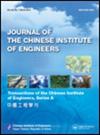Behavior of fire-retardant treated bolted timber–steel composites (TSCs) and effective charring depth based on experiment
IF 1.2
4区 工程技术
Q3 ENGINEERING, MULTIDISCIPLINARY
Journal of the Chinese Institute of Engineers
Pub Date : 2023-09-30
DOI:10.1080/02533839.2023.2262042
引用次数: 0
Abstract
ABSTRACTThe bolted joints make timber–steel composites (TSCs) easily to be assembled; however, seams exist between the timber components for bolted TSC components resulting in the risk of fire spreading into the joint seam when the component is under fire. The efficient charring depth provided by timber needs to be clarified; furthermore, the raising temperature potentially affects the strength of steel component. In this study, TSCs were tested in fire for 1 hour, and the following issues were examined, including the experimental charring depth of timber components, the influence of fire-retardant finish in order to provide the efficient charring depth, and additionally the suggested charring depth are proposed for the design of TSCs. In conclusion, the charring depth in the seams was greater than the regulation values, and evaluation methods for the charring depth at seams should be reconsidered. Although the fire-retardant finish reduced the formation rate of the char layer, the flames still breached the seams. The results reveal that Douglas fir TSCs with fire retardant are the most efficient specimen, with effective charring depth 52 mm. While the effective charring depth of Douglas fir TSCs without fire retardant and Japanese Cedar TSCs with fire retardant are increased, at least 64 mm and 65 mm needed, respectively.CO EDITOR-IN-CHIEF: Ou, Yu-ChenASSOCIATE EDITOR: Ou, Yu-ChenKEYWORDS: Timber–steel compositeseffective charring depthfire-retardantjoint seams Nomenclature b=original width of TSC componentd0=a constant of 7 mmdchar=charring depthdchar,eff=effective charring depthdchar,x=charring depth along x-axisdchar,y=charring depth along y-axish=original height of TSC componentk0d0=pyrolysis layer thicknessT=Average furnace temperature (°C)t=Elapsed time of experiment (min)β=charring rateAcknowledgmentsThis research was financially supported by National Taiwan University of Science and Technology under grant number II-2-2, Forestry Bureau, Council of Agriculture under grant number 110Linfa-04.1-Zao-24(2), and Ministry of Science and Technology under grant number MOST 110-2221-E-011-055 -.Disclosure statementNo potential conflict of interest was reported by the author(s).Additional informationFundingThis work was supported by the Ministry of Science and Technology, Taiwan [MOST 110-2221-E-011-055 -]; National Taiwan University of Science and Technology [II-2-2]; Forestry Bureau, Council of Agriculture [110Linfa-04.1-Zao-24(2)].基于实验的阻燃处理螺栓连接木钢复合材料(TSCs)性能及有效炭化深度
摘要:螺栓连接使木钢复合材料(TSCs)易于组装;然而,螺栓式TSC构件的木材构件之间存在接缝,当构件受到火灾时,火灾有蔓延到接缝内的危险。木材提供的有效炭化深度需要澄清;此外,温度升高可能会影响钢构件的强度。本研究对TSCs进行了1小时的火试,考察了木材组分的实验炭化深度,阻燃剂对TSCs有效炭化深度的影响,并提出了TSCs设计的建议炭化深度。综上所述,煤层积炭深度大于规定值,应重新考虑煤层积炭深度的评价方法。虽然阻燃处理降低了炭层的形成速度,但火焰仍然突破了接缝。结果表明,添加阻燃剂的花旗松TSCs是最有效的样品,有效炭化深度为52 mm。未加阻燃剂的花旗松TSCs和加阻燃剂的杉木TSCs的有效炭化深度有所增加,分别至少需要64 mm和65 mm。副主编:欧宇晨木材-钢复合材料有效炭化深度耐火节理命名法b= TSC组分的原始宽度d0= 7毫米常数dchar=炭化深度dchar,eff=有效炭化深度dchar,x=沿x轴炭化深度dchar,y=沿y轴炭化深度= TSC组分的原始高度k0d0=热解层厚度st =平均炉温(℃)t=实验经过时间(min)β=炭化速率国家科学技术基金资助号:II-2-2;林业局、农业局资助号:110Linfa-04.1-Zao-24(2);科技部资助号:MOST 110-2221-E-011-055 -。披露声明作者未报告潜在的利益冲突。本研究得到了台湾科技部的支持[MOST 110-2221-E-011-055 -];国立台湾科技大学;农业委员会林业局[110林法-04.1-早-24(2)]。
本文章由计算机程序翻译,如有差异,请以英文原文为准。
求助全文
约1分钟内获得全文
求助全文
来源期刊
CiteScore
2.30
自引率
9.10%
发文量
57
审稿时长
6.8 months
期刊介绍:
Encompassing a wide range of engineering disciplines and industrial applications, JCIE includes the following topics:
1.Chemical engineering
2.Civil engineering
3.Computer engineering
4.Electrical engineering
5.Electronics
6.Mechanical engineering
and fields related to the above.

 求助内容:
求助内容: 应助结果提醒方式:
应助结果提醒方式:


